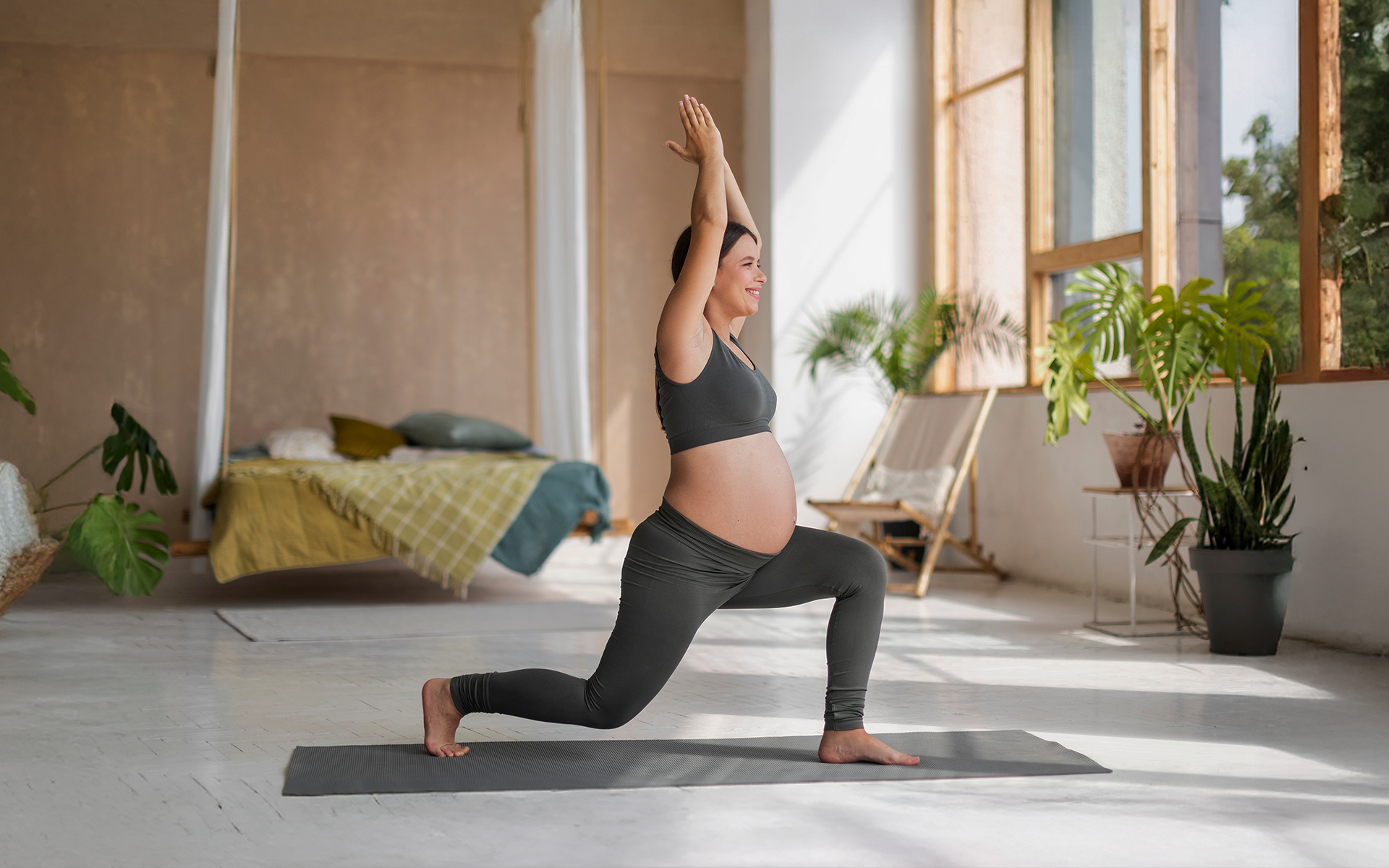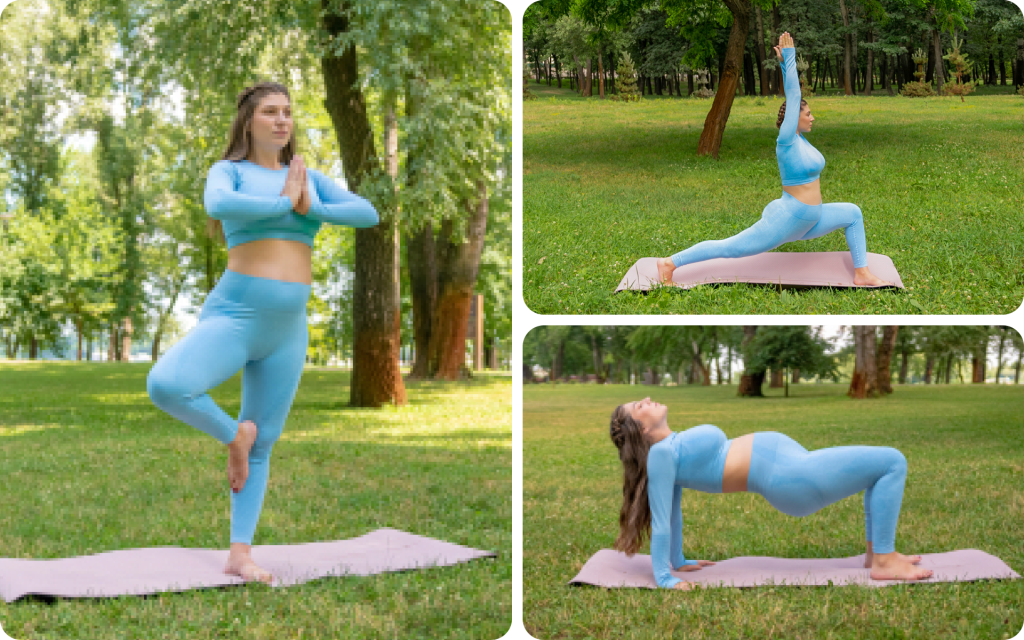If you exercise, you’ll stay in shape and your muscles will be just fine, right? Well, that seems to be the conventional wisdom. However, sometimes due to health and natural factors, such as aging and childbirth, your muscle strength may start deteriorating.
Pelvic floor dysfunction is the inability to properly relax and coordinate your pelvic floor muscles to perform bowel movements. That being said, are there any exercises that can help with this condition by improving the integrity of these muscles? Here’s everything you need to know about pelvic floor dysfunction and the strength of your pelvic floor muscles.
What Is Pelvic Floor Dysfunction?
This is a fairly common condition where you can’t properly relax and coordinate the muscles in your pelvic floor. As a result, this affects your ability to urinate or perform any kind of bowel movement. Sometimes, women may also experience pain during sex, while for men, it can sometimes manifest itself as erectile dysfunction (5).
Your pelvic floor comprises muscles found at the base of the bottom of your torso. To put it in perspective, your pelvis hosts your uterus (for women), prostate (for men), bladder, and rectum. At the same time, the pelvic floor is a base support structure that keeps everything where they’re supposed to be. Some of these muscles increase stability by forming a sling around your rectum (5).
In ideal situations, going to the bathroom doesn’t usually involve any difficulties. That’s because your body can tighten and relax these muscles as needed. So everything is just perfect, right?
However, things change a bit if you have pelvic floor dysfunction. More specifically, your body continually contracts your pelvic floor muscles without relaxing them. As a result of this tension, you may start to experience (5):
- Incomplete bowel movements
- Leaking of urine or stool (incontinence)
- Difficulties releasing bowel movements (it is believed that almost half of people who suffer from long-term constipation also have pelvic floor dysfunction)
- Lower back pain that isn’t caused by something else
- Muscle spasms in your pelvic region
- Discomfort during sex for women
- Erectile dysfunction (ED) for men (Simply put, ED is when men are unable to get or maintain a viable erection. As much as pelvic muscle pain or tension may be the cause, it isn’t always. ED is a complex condition, so you should first seek the advice of a medical professional.)
- General pain and pressure in your pelvic region or rectum – usually with or without any bowel movements
- Frequently having the urge to use the bathroom (sometimes you may feel as if you’re “forcing it out” or finding yourself starting and stopping several times)
- Painful urination
That being said, what causes pelvic floor dysfunction? Is it just a health condition, or are there other factors in play? We find out next.
Causes of Pelvic Floor Dysfunction
Research is still ongoing to determine the exact causes of pelvic floor dysfunction. However, doctors have linked it to events that tend to generally weaken your pelvic muscles or tear its connective tissue.
Some of the known factors in this case include (5):
- Traumatic injury to your pelvic area such as car accidents
- Overusing your pelvic muscles (for example, going to the bathroom too often or pushing too hard, which can ultimately lead to poor muscle coordination)
- Pelvic surgery
- Obesity
- Aging
- Pregnancy and childbirth (Pregnancy is believed to be the most common cause of pelvic floor dysfunction. It mostly manifests itself after giving birth. This can be attributed to the fact that your pelvic floor muscles are usually strained during pregnancy. Long or difficult labor also worsens the situation).
- Nerve damage
- Hereditary condition (In some cases, pelvic floor dysfunction is known to run in the family. However, researchers are still investigating the exact genetic cause of pelvic floor dysfunction).
Reasons why BetterMe is a safe bet: a wide range of calorie-blasting workouts, finger-licking recipes, 24/7 support, challenges that’ll keep you on your best game, and that just scratches the surface! Start using our app and watch the magic happen.
Diagnosis and Treatment of Pelvic Floor Dysfunction
Pelvic floor symptoms may serve as an indicator of more serious conditions. Therefore, you shouldn’t try to self-diagnose your symptoms. You should seek evaluation from a medical professional, which could include an ob-gyn or physiotherapist (PT) who specializes in pelvic floor dysfunction. This will then be followed by physical evaluations to check for muscle spasms, knots, and weakness.
When checking for your ability to control your pelvic muscles and contractions, an internal exam may be performed. This is usually done by putting a perineometer into your vagina or rectum. Other fewer alternatives include placing electrodes on your perineum (the small area of skin and muscle between the genitals and the anus) to check if you’re able to contract and relax your pelvic muscles.
The goal of any treatment is to relax your pelvic muscles and give you more control to make bowel movements easier. Surgery is an option, but some less invasive treatment options are available.
One of the most common treatments for pelvic floor dysfunction is biofeedback. This procedure allows your medical provider to monitor contractions and relaxations in your pelvic muscles using special sensors. After these observations, they are able to advise you on how best to improve your condition.
Other adjuvant therapies/treatments include:
- Self-care. You should avoid straining or pushing yourself when using the bathroom. Doing this will go a long way in alleviating any stress on your pelvic floor muscles.
- Warm baths can also be very useful since warm water relaxes your muscles while improving blood circulation.
- Yoga poses such as child’s pose or happy baby’s pose are also relaxing yoga poses that are great for general relaxation and pelvic floor relaxation, so they may offer relief.
- Mindful breathing with visualization – take 5 to 10 minutes to do some simple breathing exercises. With every exhalation, visualize your muscles relaxing and letting go. You can use the simple mantra of ‘let go’ to help you with muscle relaxation.
- Medication. Muscle relaxants can be prescribed by your physician to help with your symptoms. The relaxants are particularly effective for preventing your pelvic muscles from contracting (1).
But how effective is exercise as a preventive or a curative measure for pelvic floor dysfunction? Perhaps you’re wondering, “can I exercise if I have pelvic floor dysfunction?” The answer is yes, you can, but you need to know the right workouts to use as some may just make things worse.
What exactly is the relationship between pelvic floor dysfunction and exercise?
When most people think of pelvic floor exercises, they think of kegel exercises. While these exercises are great for strengthening the pelvic floor (and can help prevent pelvic floor dysfunction), they require muscle contraction. It’s important to remember that once pelvic floor dysfunction sets in, exercises must be balanced to relax the pelvic floor in order to strengthen it.
Next, we’ll look at how you can strengthen your pelvic floor with kegels.
Read more: Best Pelvic Floor Exercises: 7 Moves To Strengthen Your Muscles
How to Strengthen Pelvic Floor with Kegels
Kegel exercises are muscle contractions on your pelvic floor. They are particularly famed for their role in strengthening pelvic floor muscles, creating a domino of health benefits (9).
How to Do Kegel Exercises
Have you been wondering how to do kegels the right way using the proper form? Here’s what you’ll need to do:
- Start by identifying the exact muscles you need to work on. The most effective way of doing this is to stop your urination midstream.
- Now contract these muscles and hold the position for up to 5 seconds to successfully perform kegels. Release them for 5 seconds.
- Perform 10 reps three times daily.
Kegels can sometimes be difficult to pull off for some people. If this is the case for you, you should try:
- Performing them while lying down is usually the easiest position to perform kegels in.
- Improving your technique for maximum impact. Thinking of yourself sitting on a marble then tightening your pelvis to lift the marble should do the trick.
- Focusing on tightening your pelvic floor muscles only. Don’t flex the muscles in your thighs, abdomen, or butt. Also, avoid holding your breath during the process. Instead, breathe freely.
Finally, you shouldn’t consistently use kegel exercises to start and stop your urine stream. This is because it may result in incomplete emptying of your bladder, which will put you at risk of contracting urinary tract infections (4).
As with all other workouts, there’s no one-size-fits-all approach. While they’re effective, kegels may not always work for everyone due to several factors. However, that doesn’t mean that there are no alternatives you can use to strengthen your pelvic floor muscles. There are quite a few, and we’ll look at some of them in the next section.
How to Strengthen Pelvic Floor Muscles Without Kegels
There are several options you can use to strengthen your pelvic floor muscles if you’re struggling with kegels. Performing these exercises in different combinations is the best way to yield maximum results. Due to the wide variety that is available, you should pick moves you’re most comfortable and familiar with.
Below are some of the top workouts you can try to strengthen your pelvic floor muscles:
Bird Dog
This is a stability and balance exercise that engages several muscles simultaneously, including the pelvic floor (2).
Here’s what you’ll need to do:
- Get on all fours with your wrists under your shoulders and your knees under your hips.
- Brace your core while drawing your shoulder blades down your back toward your hips.
- Start the move with exhalation and by simultaneously straightening and raising your right arm and left leg. Your pelvis and shoulders should be in a neutral position. Also, don’t lower or raise your head. Hold this position for about 2 seconds.
- As you inhale, bend and lower your arm and leg down back to the original position without compromising on your stability. Now switch and raise your left arm and right leg. This completes one rep.
- Perform 10 reps and three sets.
Point to Note:
If you’re having a hard time lifting your arm and leg at the same time, you can perform this easier arm-only variation:
- Start on all fours as explained above and brace your core by pulling your belly button to your spine. Remember to keep breathing.
- On an exhale, raise one arm in front of you. Keep your pelvis and shoulder in a neutral position and keep your arm raised for 2 seconds.
- Inhale and lower your arm back to the original position. Alternate arms and lift your other arm. This completes one rep.
- Perform 10 reps and three sets.
For a leg-only variation, the instructions are the same – simply lift one leg instead of an arm.
BetterMe: Health Coaching app helps you achieve your body goals with ease and efficiency by helping to choose proper meal plans and effective workouts. Start using our app and you will see good results in a short time.
Squats
Squats are one the best exercises when it comes to strength gains. This is probably because they engage some of the largest muscles in your body, including your hamstrings, glutes, and quadriceps (3). However, you should make sure you’ve mastered the correct form before adding any resistance.
Here’s what you’ll need to do:
- Stand upright and place your feet slightly wider than shoulder-width apart. You should also ensure your toes are slightly pointed out.
- Bend your knees while pushing your hips and butt back, as if imitating sitting on a chair. Take a large diaphragmatic breath and tighten your core muscles, holding as you descend. Ensure your chin is tucked and your neck is neutral throughout the process.
- Now gradually drop down until your thighs are parallel to the ground. Your weight should be on your heels and your knees bowed slightly outward.
Please Note: If you’re having difficulty staying on your heels/activating your posterior chain (glutes/hamstrings), you can try squatting to a target (such as a chair or wall ball).
- Straighten your legs and exhale as you ascend to the starting position.
- Perform approximately 15 reps.
Bridges
Bridges are usually great workouts for your glutes. However, if you do them correctly, they can also activate your pelvic floor muscles. This workout can be just as effective with or without weights.
Here’s what you’ll need to do:
- Get into your starting position by lying on the floor. Ensure your spine is against the floor and your knee is bent at 90 degrees. Also, your feet should be flat, and your arms straight at your sides with your palms facing downward.
- Next, exhale while pushing through your heels, then raise your hips off the ground by squeezing your hamstrings, glutes, and pelvic floor. Ensure your body is resting on your shoulders and upper back and forms a straight line down from your knees.
- Pause for 1-2 seconds while at the top. As you inhale, return to your starting position.
- Perform 10-15 reps in two to three sets. Rest for 30-60 seconds between sets.
Split Tabletop
Tabletops are leg movements that are generally the foundation of several moves in a Pilates workout. When you add some splits to the equation, your hip and pelvic floor muscles are also activated.
Here’s what you’ll need to do:
- Get into your starting position by lying with your back on the floor and your knees bent. This position should leave your thighs perpendicular to the floor and shins parallel to the floor.
- Now brace your abs, then activate your inner thighs with your legs touching.
- As you inhale, gently split your legs so that each of your knees falls outward in a steady, controlled movement. You should only go as far as you’re comfortable with.
- Slowly raise back to the starting position as you exhale.
- Perform 10-15 reps and three sets.
Read more: Kegel Exercises: Why And How To Do Them
Benefits of Pelvic Floor Exercises
Some of the benefits that can be realized from pelvic floor exercises include:
- Reduced chances of developing prolapse. Yes, there is a relationship between pelvic floor dysfunction and prolapse exercises. These exercises have been shown to reduce the risk of developing prolapse when done correctly (7).
- Improved sexual sensation and function. If you’ve been researching pelvic floor dysfunction, chances are you’ve come across titles such as “pelvic floor exercises for erectile dysfunction”. These exercises are believed to increase sensitivity during sex, resulting in stronger orgasms in women. For men, the exercises have been shown to reduce the symptoms of erectile dysfunction (8).
- Pain relief. These exercises are known to alleviate pelvic pain by strengthening your muscles (6).
The Bottom Line
Pelvic floor dysfunction can be caused by several factors. It can also manifest itself in different levels of severity. Therefore, you should always seek professional medical advice if you start to experience any of the previously mentioned symptoms.
By combining relaxation techniques and pelvic floor exercises, you can help reduce your symptoms. The beauty of these exercises is that there’s a wide variety to choose from, so if kegels aren’t your thing, tabletops, bridges, squats, and bird dogs may be just what you need. Finally, remember to use the proper form and take enough breaks between workouts.
DISCLAIMER:
This article is intended for general informational purposes only and does not serve to address individual circumstances. It is not a substitute for professional advice or help and should not be relied on for making any kind of decision-making. Any action taken as a direct or indirect result of the information in this article is entirely at your own risk and is your sole responsibility.
BetterMe, its content staff, and its medical advisors accept no responsibility for inaccuracies, errors, misstatements, inconsistencies, or omissions and specifically disclaim any liability, loss or risk, personal, professional or otherwise, which may be incurred as a consequence, directly or indirectly, of the use and/or application of any content.
You should always seek the advice of your physician or other qualified health provider with any questions you may have regarding a medical condition or your specific situation. Never disregard professional medical advice or delay seeking it because of BetterMe content. If you suspect or think you may have a medical emergency, call your doctor.
SOURCES:
- Advances in the Treatment of Chronic Pelvic Pain: A Multidisciplinary Approach to Treatment (2017, nih.gov)
- Bird Dog Guide: How to Master the Bird Dog Exercise (2021, masterclass.com)
- Health Benefits of Squats (2021, webmd.com)
- Kegel exercises: A how-to guide for women (2020, mayoclinic.org)
- Pelvic Floor Dysfunction (2020, clevelandclinic.org)
- Pelvic Floor Muscle Relaxation For Men (n.d., pelvicpain.org.au)
- Pelvic organ prolapse: Pelvic floor exercises and vaginal pessaries (2018, nih.gov)
- What are pelvic floor exercises? (2020, nhs.uk)
- Working your pelvic floor (n.d., pelvicfloorfirst.org.au)










